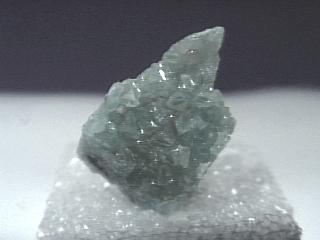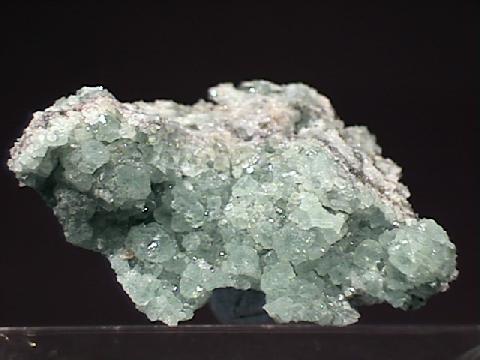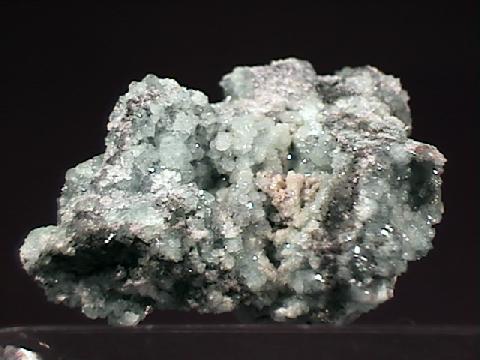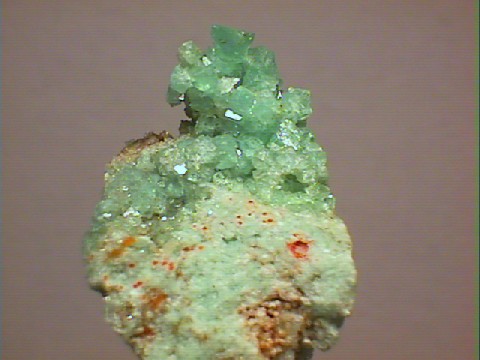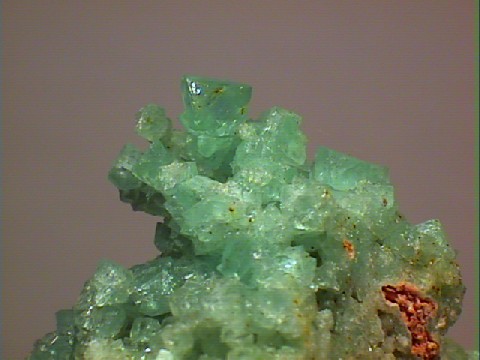 THE
MINERAL BORACITE
THE
MINERAL BORACITE
- Chemistry: Mg3B7O13Cl, Magnesium Borate Chloride.
- Class: Carbonates
- Subclass: Borates
- Uses: An ore of boron for boric acid and borax (a cleaning agent and useful industrial chemical) and as mineral specimens.
Specimens
Boracite is an interesting borate mineral. It has good color, clarity and hardness to be a gemstone and yet it is rarely cut for this purpose. Probably because it is slightly soluble in water and ordinary wear dulls its surface. It is an attractive mineral for mineral specimens though.
Boracite is similar to quartz, in that it has high temperature and low temperature phases. The high temperature phase is cubic and forms nice well shaped cubes and octahedrons that are often modified by other isometric forms. The low temperature orthorhombic phase is the only phase that is stable at normal surface temperatures. This means that when the high temperature phase cools down, it converts to the low temperature phase. The conversion is easily accomplished and does not alter the outward appearance of the crystal, preserving the isometric forms. Therefore the specimens of boracite in a collection are actually the orthorhombic phase in the isometric crystal forms. Mineralogists refer to this as a pseudomorph, or "false shape".
Boracite is an evaporite mineral and is not surprisingly found with other evaporite minerals like anhydrite, gypsum and halite. Its crystals are often embedded in these other evaporite minerals suggesting that they formed later than the others, especially since the crystals are in the high temperature phase.
A variety of boracite is called "strassfurtite" and is a fibrous form found at Strassfurt, Germany.
PHYSICAL CHARACTERISTICS:
- Color is white to colorless and with pale tints of yellow, green and blue.
- Luster is vitreous.
- Transparency: Crystals are transparent to translucent.
- Crystal System is orthorhombic; 2/m 2/m 2/m , isometric; 4/m bar 3 2/m at high temperatures.
- Crystal Habits include highly modified cubes and octahedrons which are actually pseudomorphs of the high temperature isometric phase. Also massive, fibrous, nodular and as embedded grains.
- Cleavage is absent.
- Fracture is uneven or conchoidal.
- Hardness is 7 - 7.5
- Specific Gravity is approximately 2.9 - 3.0 (average for translucent minerals)
- Streak is white.
- Other Characteristics: Slightly soluble in water.
- Associated Minerals are anhydrite, gypsum, halite and other evaporite minerals.
- Notable Occurrences include Yorkshire, England; Strassfurt, Germany; Bolivia; Chactaw Salt Dome, Louisiana and Otis, California, USA and France.
- Best Field Indicators are crystal habit, color, associations, locality, lack of cleavage and the high hardness.

